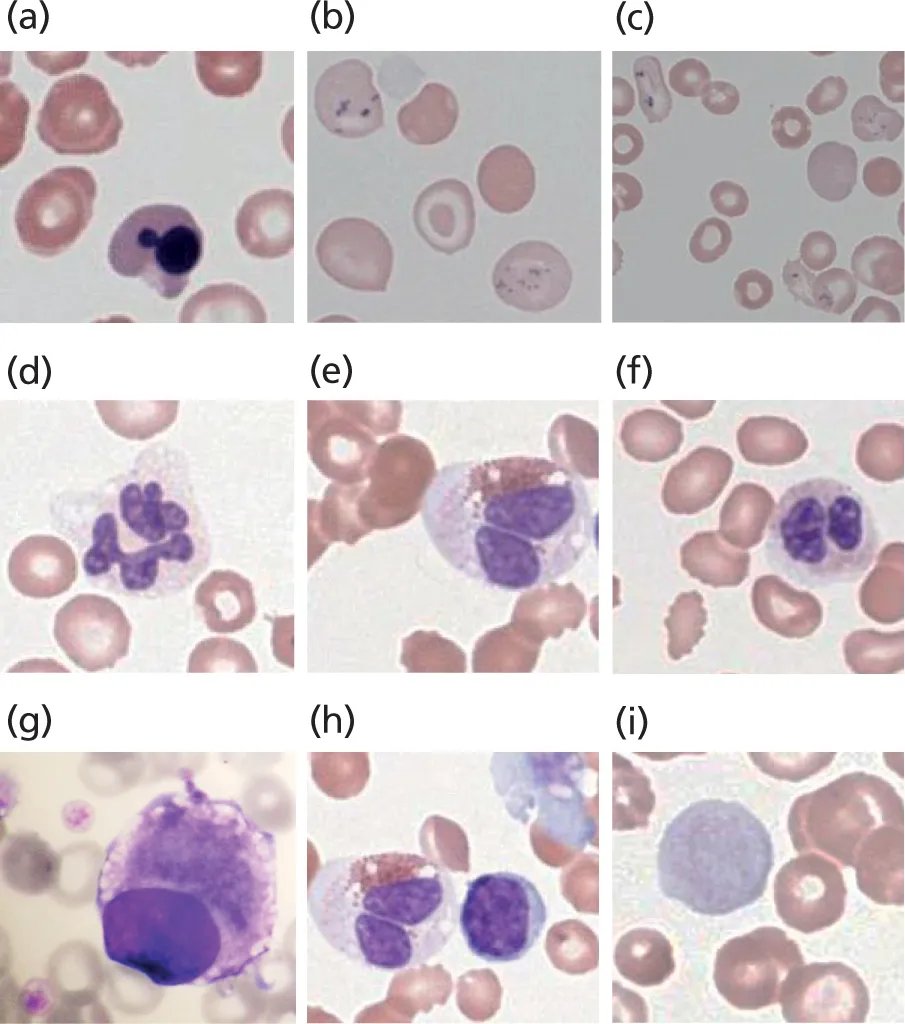3Diagnosis and classification
There is no specific diagnostic test for MDS; they must be distinguished from the diagnosis of dysplasia associated with marrow failure syndromes and other clonal disorders, as well as non-clonal non-malignant causes, such as infections, nutritional deficiencies and intoxications (Figure 3.1). Diagnosis requires excellent morphological evaluation, as well as cytogenetic and molecular data, in the context of peripheral blood cytopenias. Clinical correlation is also important to rule out familial syndromes and non-neoplastic causes of dysplasia.
MDS should be suspected in a patient with otherwise unexplained cytopenia. Although the diagnosis may be suggested by the blood counts and peripheral blood smear, ultimately, analysis of bone marrow samples is required to make a firm diagnosis. This allows examination of the morphological, histological and genetic changes that are required to reach and subclassify a diagnosis of MDS. Because there is no single test for MDS and some aspects of diagnosis, such as the interpretation of dysplastic changes, can be subjective, it is often a challenging condition to confidently diagnose.
Figure 3.1 Clonal and non-clonal causes of dysplasia and diseases that overlap with MDS morphology or clinical presentation. Figure not drawn to scale. AA, aplastic anemia; CCUS, clonal cytopenia of undetermined significance; ICUS, idiopathic cytopenia of undetermined significance; IDUS, idiopathic dysplasia of undetermined significance; LGL, large granular lymphocyte leukemia; MPN, myeloproliferative neoplasm; PRCA, pure red cell aplasia.
Differential diagnoses
There is a long list of differential diagnoses for cytopenia and many non-malignant causes of dysplastic features that mimic those of MDS (Table 3.1). Initial review should focus on excluding non-clonal causes before focusing on a possible MDS diagnosis. The emergence of a greater array of genetic tests has aided the diagnosis of MDS, but equally has created a more complex diagnostic landscape.
Once a diagnosis of MDS is reached, the next stage is to subclassify and then risk stratify the disorder. This will inform the patient’s prognosis and help to determine the most appropriate management strategy.
TABLE 3.1
Differential diagnosis of suspected MDS
• Chronic liver disease
• Drug-induced cytopenia
• Alcohol excess
• Cytotoxic medications
• Vitamin B12/folate deficiency
• Autoimmune disease
• Anemia in chronic disease
• Parasitic manifestations
• HIV infections
• Other stem-cell disorders
Full blood count and peripheral blood smear
Full blood count. The presence of a cytopenia is a prerequisite for the diagnosis of MDS. According to the WHO classification of MDS revised in 2016, cytopenia is defined as hemoglobin less than 10 g/dL (100 g/L), platelets less than 100 × 109/L and absolute neutrophil count less than 1.8 × 109/L.1
A peripheral blood smear should be created once a cytopenia has been identified so that morphological assessment can be undertaken. Peripheral blood morphology can be normal in MDS, but there are often changes that hint at the diagnosis (Table 3.2 and Figure 3.2). The first review of a film, and therefore suspicion of MDS, will generally be made in the laboratory and, as such, the presence of experienced and competent laboratory staff is essential.
Common features include macrocytosis in mature erythrocytes or hypogranularity and/or abnormal nuclear appearances in mature neutrophils (see Figure 3.2). Changes in platelets can be more subtle but may also be present.
TABLE 3.2
Blood film features suggestive of/associated with dysplasia (but not pathognomonic for MDS)
Erythrocytes | Granulocytes | Platelets |
Anisocytosis | Abnormal segmentation | Giant platelets |
Poikilocytosis | Pseudo-Pelger neutrophils | Platelet anisocytosis |
Polychromasia | Hypersegmentation | Megakaryocytic fragments |
Stippling/granules | Hypogranular and agranular forms | Rarely micromegakaryocytes |
Abnormal hemoglobinization | | |
Nucleated RBCs | | |
Figure 3.2 Examples of dysplastic features in peripheral blood in MDS. Erythrocytes (MDS-RS-SLD): (a) nuclear blebbing in erythroblast; (b) basophilic stippling and siderotic granules; and (c) abnormal hemoglobinization of RBCs with basophilic stippling and granules. Granulocytes (MDS-RS-MLD): (d)–(f) abnormal segmentation of neutrophils. Platelets: (g) micromegakaryocyte and large platelets; (h) megakaryocytic fragment and abnormal granulation of eosinophil; and (i) giant platelet. All images 600× magnification. Images: NH Lawrence©. MLD, multilineage dysplasia; RS, ring sideroblast; SLD, single-lineage dysplasia.
Bone marrow biopsy
Unless clinically inappropriate, all patients in whom MDS is suspected should undergo bone marrow biopsy. This procedure will allow the acquisition of samples for morphological and histological assessment, immunophenotyping and genetic analysis.
Bone marrow morphology. A marrow aspirate is a liquid sample obtained from the bone marrow cavity. An aspirate smear is made, which will demonstrate the hematopoietic elements within the marrow and must be carefully examined by an experienced hematopathologist. Quantitative and qualitative comments should be made for each of the erythroid, myeloid and megakaryocytic lineages, specifically commenting on whether maturation is normal or abnormal, with a description of any abnormal features that are present. The presence of dysplastic features in 10% or more of any of the hematopoietic lineages is considered significant and compatible with a diagnosis of MDS (Figure 3.3 and Table 3.3). Given that a precise percentage of an abnormal cell type is required for MDS diagnosis, a 500-cell differential should be performed if t...


